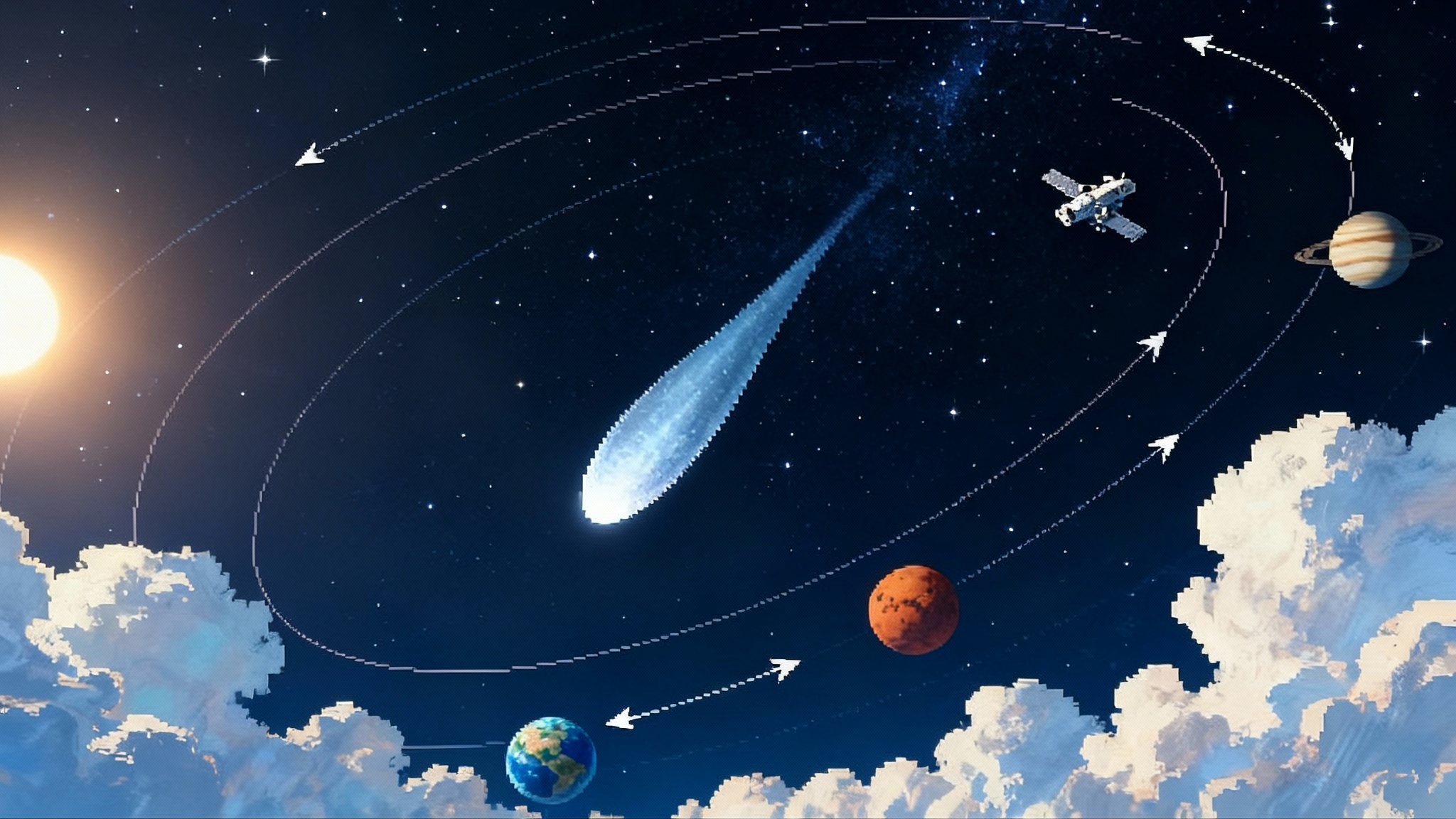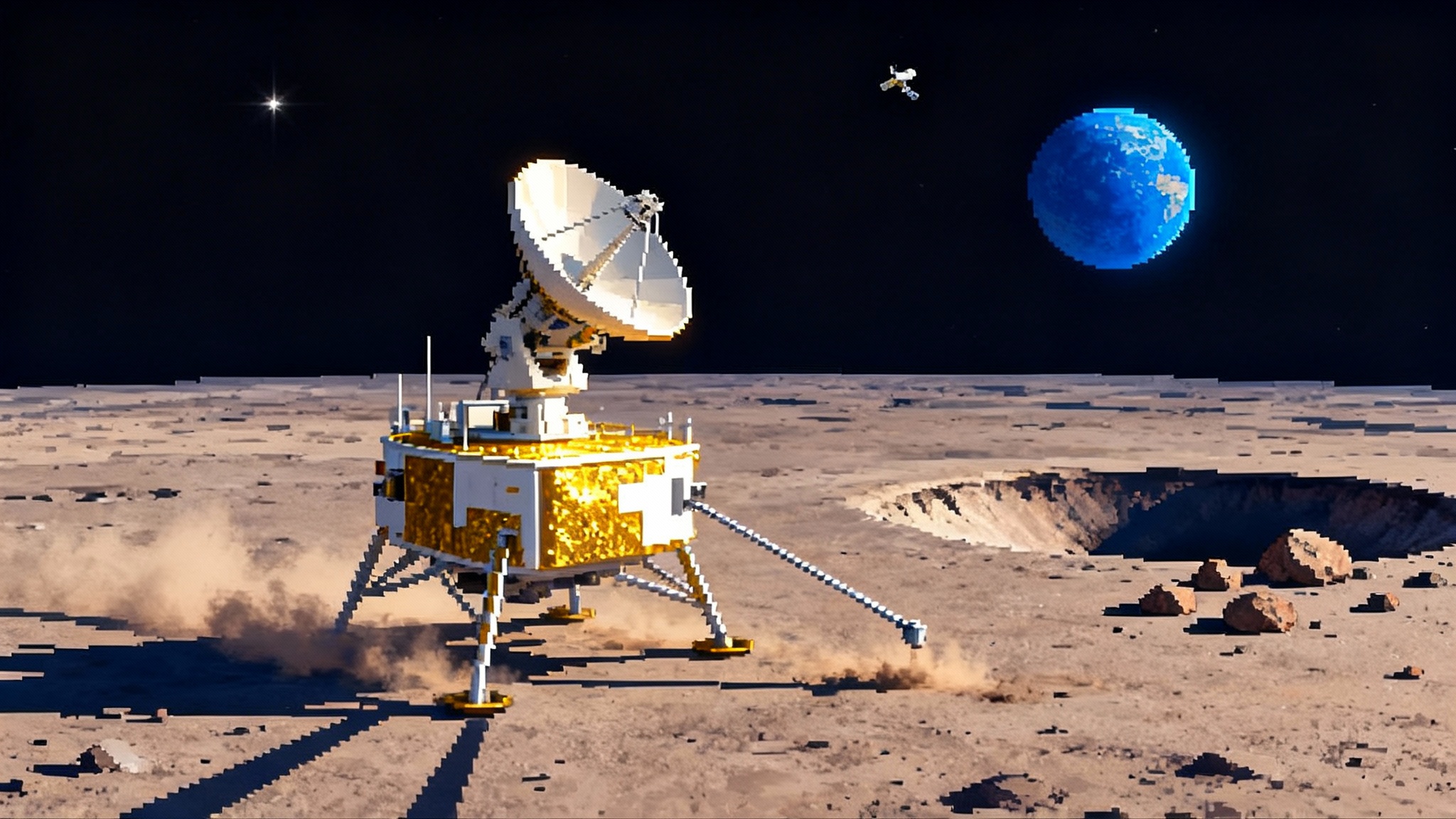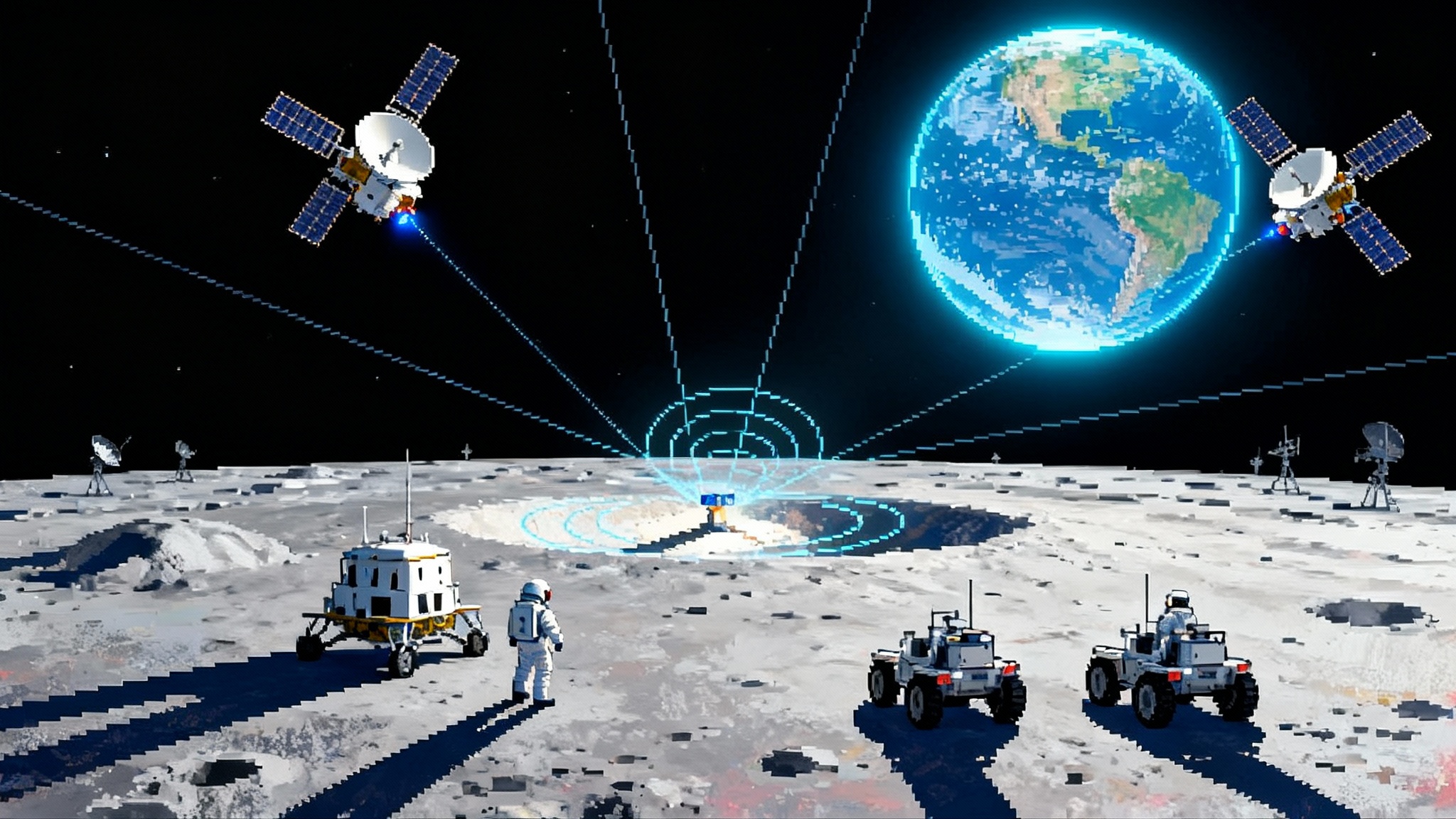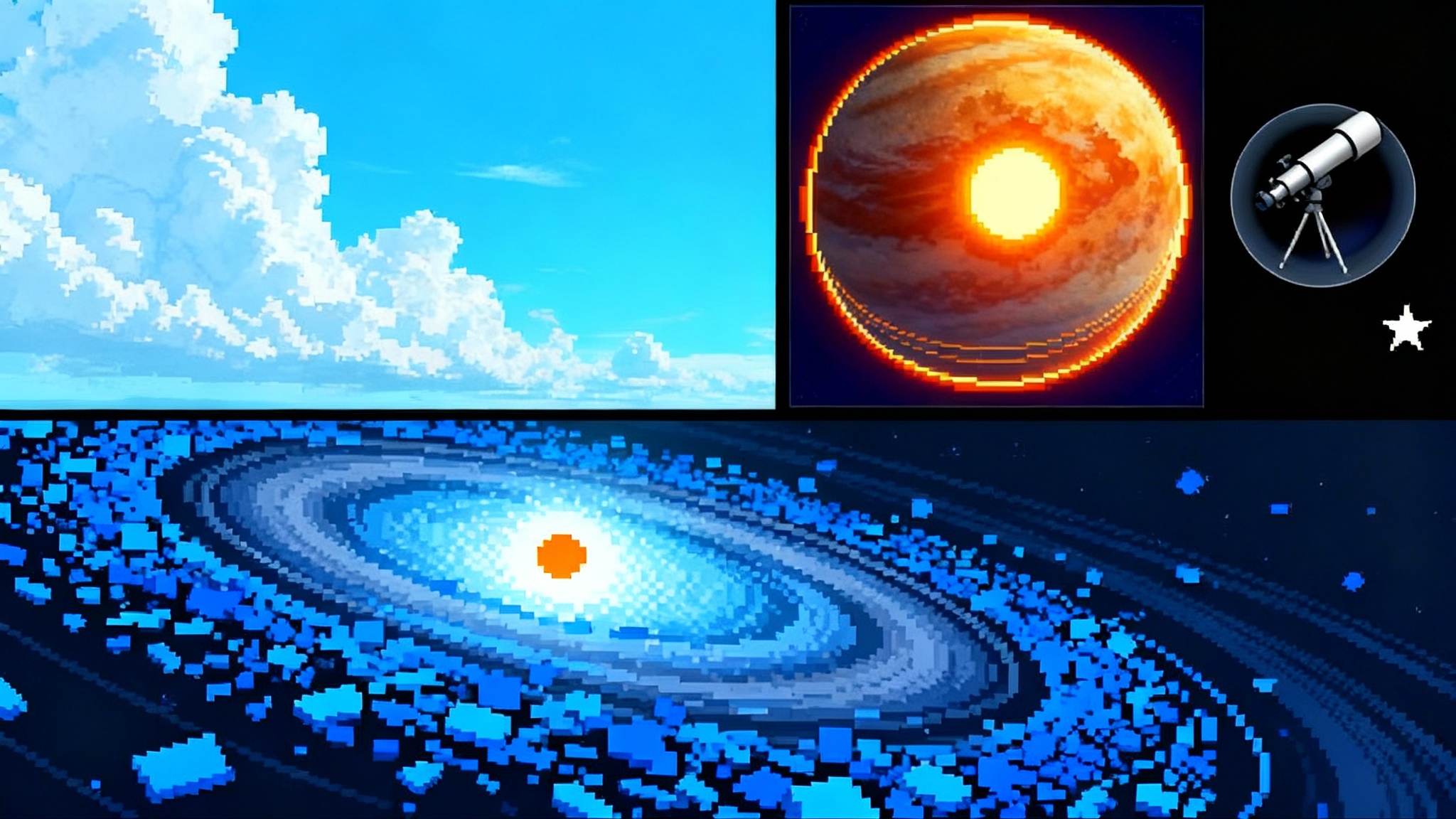3I/ATLAS Turns the Solar System into a Real Time Lab
A once-in-a-generation visitor triggered a solar-system-wide observing sprint. From Mars orbiters to a spacecraft near Jupiter, coordinated teams turned geometry into data and speed into science.

Breaking: a third visitor from the stars is in play
In the predawn quiet of July 1, 2025, a faint, moving smudge tripped automated alarms at a survey telescope in Río Hurtado, Chile. Within hours the Asteroid Terrestrial-impact Last Alert System team, funded by NASA and operated by the University of Hawaii, had a short arc for an object that made no sense if it were local. The orbit did not close, the speed was too high, and follow-up from professional and amateur observers agreed. The International Astronomical Union confirmed the designation that would electrify planetary science: 3I/ATLAS, only the third interstellar object known after ʻOumuamua in 2017 and 2I/Borisov in 2019. For the basics on discovery, trajectory, and size estimates, NASA has published a concise backgrounder.
The important part is what happened next. Instead of a traditional, slow rollout of separate observation campaigns, the planetary science community spun up a distributed, real-time response stretching from ground-based telescopes to orbiters at Mars and even a mission out near Jupiter. The whole solar system became a single laboratory.
What 3I/ATLAS is and why it matters right now
Interstellar objects are not bound to the Sun. They arrive on hyperbolic orbits with excess speed, pass once, and move on forever. That turns time into the scarcest commodity in this field. 3I/ATLAS is active, which tells astronomers it behaves like a comet. Ice near its surface turns to gas as sunlight increases, dragging out dust to form a pale atmosphere called a coma. Early Hubble imaging in late July showed a teardrop-shaped coma and helped bound the nucleus to a range of a few hundred meters up to several kilometers. The speed is extreme by local standards, roughly 60 kilometers per second relative to the Sun before it accelerated further near perihelion.
The geometry is favorable for a cross-solar-system campaign. The comet reached perihelion around October 30, 2025, just inside the orbit of Mars. It stayed well away from Earth, never closer than about 1.8 astronomical units in mid December. That safe distance is less exciting for backyard viewing, but it is perfect for coordinated science: enough sunlight to drive activity, enough time to aim a lot of instruments, and no risk to our planet.
A solar-system-sized observing team forms in hours
Think of this campaign as a relay race in which runners start their sprints as soon as they receive the baton. The Minor Planet Center astrometry flowed quickly, and preliminary orbits sharpened with each new observation. JPL Horizons daily ephemerides produced updates that mission planners could drop into pointing software. University and national observatories filed target-of-opportunity requests, while survey telescopes adjusted cadence to catch the object as it crossed crowded star fields near the center of the Milky Way, a mode boosted by the culture of rapid scheduling seen in Rubin real-time sky firehose.
At the same time, space observatories adjusted. Hubble secured early imaging to constrain the nucleus and coma. NASA’s heliophysics and astrophysics assets looked for windows where 3I/ATLAS would cross their fields of view or where their instruments could safely point off-nominal. This is the quiet revolution. Instead of waiting for a single flagship to do all the work, dozens of platforms contributed targeted snapshots that, together, reveal how an interstellar comet wakes up, sheds material, and evolves week by week.
Mars becomes a forward scout
In early October, the geometry delivered a unique opportunity. On October 3, 2025, 3I/ATLAS passed closest to Mars at a distance of roughly 30 million kilometers. That is far by everyday standards, yet it placed the comet in reach of cameras built to track a planet. The European Space Agency’s ExoMars Trace Gas Orbiter and Mars Express both slewed away from the Red Planet to collect images during the first week of October. ExoMars used its CaSSIS camera, which normally photographs Martian rocks and dunes from a few hundred kilometers away, and still managed to tease out a small fuzzy coma by stacking short exposures. Mars Express used the High Resolution Stereo Camera to attempt similar measurements.
China’s Tianwen-1 orbiter joined in from another vantage point and returned a series of frames that, once stacked, showed motion against the star field over half a minute. For ground teams, these were not beauty shots. They were calibration points, vital to check models of dust production and coma shape from a location that was not Earth. The operational agility rhymes with the playbooks honed for Mars missions such as New Glenn Mars shot and ESCAPADE.
Why a Martian vantage matters. Imagine you are trying to reconstruct a 3D shape from a single security camera. You can guess. Add a second camera 100 million kilometers away and parallax turns guesses into measurements. With cameras at Mars, photometry taken almost simultaneously from Earth, and space telescopes above Earth’s atmosphere, teams could triangulate the size of dust grains, the opening angle of the tail, and the rate at which sunlight was lifting material off the nucleus.
A camera near Jupiter joins the chase
After perihelion, ESA’s Jupiter Icy Moons Explorer, known as Juice, joined the campaign in November. The spacecraft’s position far from Earth gave it a very different view of the scattering angles of sunlight in the dust. That sounds esoteric, but it is the key to reading grain sizes and structures in the coma. Light scatters differently off smoky, micron-scale dust than it does off larger, compact particles. Juice’s vantage let scientists probe that scattering phase curve at angles that Earth observers alone could not get. ESA summarized the multi-mission plan for October and November in a single update often described as ESA Mars and JUICE plan.
Combining Mars, Earth, and Jupiter vantage points turns the solar system into a stereoscopic instrument. The team could isolate changes caused by geometry from real changes in the comet’s activity. If the coma brightened in one view but not in another, geometry was probably the culprit. If both brightened, they had a genuine outburst.
Earth keeps the heartbeat
Ground-based telescopes supplied cadence. The European Southern Observatory’s Very Large Telescope captured deep images by stacking frames and subtracting star trails. The Canada-France-Hawaii Telescope and Gemini South collected spectroscopy to identify ices and dust mixtures. Polarimetry teams measured how light reflected off the coma was polarized, a sensitive indicator of particle size and texture. In radio, dishes tuned to hydroxyl lines born when ultraviolet sunlight splits water molecules, a method that has long been used to infer water production in comets.
This division of labor plays to strengths. Large telescopes with narrow fields of view harvest chemical clues, while smaller telescopes networked across time zones build light curves to catch outbursts and measure rotation. Amateurs contribute as well. Backyard observers and small, robotic telescopes share astrometry and photometry that feed orbit refinements and activity models. In a funnel of data, nightly measurements shape the next day’s tasking for bigger assets.
What the science teams want to learn
The checklist is practical and specific.
- How big is the nucleus, and how fast is it spinning. Hubble’s early size bounds inform thermal models, which in turn tell researchers how sunlight penetrates the surface and how deep ices survive. If the rotation period is short, jets can flicker on timescales of minutes as vents rotate in and out of sunlight.
- What is the coma made of, and how does it change. Spectroscopy across optical and infrared wavelengths can detect signatures of water ice, carbon dioxide, and other volatiles. If water dominates, activity usually ramps up closer to the Sun. If carbon monoxide or carbon dioxide drive early activity, the coma can form farther out, which seems consistent with several teams’ prediscovery analyses.
- How are the dust grains built. Polarimetry and phase-angle studies reveal whether dust is fluffy and porous or compact and glassy. Those textures suggest formation environments in another star system. Fluffy grains tend to form in colder, gentler regions; compact grains can indicate processing by heat or impacts.
- Are there fragments or companions. High resolution imaging from Hubble or powerful ground telescopes can spot splinters. Fragmentation changes the gas and dust budget, which is why Mars-orbiter snapshots and Juice photometry matter. They can catch large-scale changes that Earth-based observers might miss when the comet sits low on the horizon.
Beyond those targets lies a broader goal. Interstellar objects record conditions that prevailed in other planetary nurseries. Even a handful of well-studied cases can reveal whether our solar system is average or odd. 2I/Borisov looked like a run-of-the-mill comet that wandered into our neighborhood. 3I/ATLAS already shows differences in its dust behavior and brightening rate. That growing catalog of diversity is the point.
The operations innovation hiding in plain sight
The most striking part of this story is not a single image or spectrum. It is the operating model. Here is what changed and why it matters.
- Rapid tasking became routine. Mission operations teams kept flexible time in their schedules for targets of opportunity. That is not free time; it is a deliberate budget choice. The payoff is agility when something like 3I/ATLAS appears.
- Cross-mission playbooks matured. Teams reused templates for pointing, exposure stacking, and background subtraction. ExoMars CaSSIS, built to image bright Mars, could pull a comet from the noise by stacking five-second frames, because engineers had a vetted template for that.
- Data moved faster. Quick-look products were shared within days, sometimes hours, with enough metadata to be scientifically useful. That speed helped ground observers pick the right filters the following night and helped space teams retarget at the right phase angles without wasting cycles.
- Parallax became a planned asset. Instead of treating geometry as a nuisance, planners put it to work. Coordinated, near-simultaneous observations from Earth, Mars, and Juice allowed teams to separate real changes in the comet from changes caused by perspective.
These are not slogans. They are mechanisms that can be funded, measured, and improved. They also show why a distributed approach beats any single flagship for fast, one-time events.
What this foreshadows: interstellar intercepts later this decade
If you want to know how a field will change, watch how it rehearses. The 3I/ATLAS campaign looks a lot like a dress rehearsal for dedicated intercept missions that aim to be waiting and ready when the next unexpected visitor appears.
- ESA’s Comet Interceptor will loiter near the Sun–Earth L2 point later this decade and sprint toward a suitable target on short notice. The mission was designed for pristine long-period comets, but an interstellar target would be a prime catch if geometry allows. The core idea is the same as this campaign: do not start from zero on discovery day.
- Agencies are refining rapid-response doctrine. The design pattern is clear. Keep a ready spacecraft in a stable parking orbit. Maintain a library of trajectories and delta-v budgets for likely approach corridors. Build instrument modes that can handle faint targets moving fast against star fields. Fund a data consortium that expects to publish a first look within days, not months. For a related trend on Mars programs, see our commercial Mars sample return reboot.
- Solar system assets will act as scouts. The 2025 experience showed how valuable a Mars or Jupiter vantage can be. Expect planning documents to propose small, simple cameras on future orbiters that include a targets-of-opportunity mode, so that whenever a transient visitor arrives, there are eyes in several places ready to look.
In short, every practical lesson from 3I/ATLAS makes interstellar interception more feasible. You cannot chase what you do not see early, and you cannot study what you cannot quickly coordinate.
What to watch next, with dates
- Late October 2025: Perihelion at roughly 1.4 astronomical units inside the orbit of Mars. This is when gas production peaks and the coma is most active.
- Early October through early November 2025: Mars-based observations bracket the close approach. ESA and Chinese teams have reported initial products, and more refined reductions should follow as calibration files are finalized.
- November 2025: Juice observations at large Sun–comet–spacecraft angles help map dust scattering and search for any post-perihelion changes in the coma.
- Early December 2025: The comet reappears from behind the Sun for Earth-based observers, which opens a second window for spectroscopic campaigns and more precise size estimates.
- Mid December 2025 into early 2026: Closest approach to Earth of about 1.8 astronomical units, still a telescopic object but accessible to a wide range of instruments as it fades.
The cadence will slow as 3I/ATLAS recedes, but the data harvest will continue for months as teams reconcile ground and space measurements and chase down any anomalies that need a second look.
Takeaways you can act on
- If you run a mission, keep a targets-of-opportunity checklist. It should include a tested image-stacking mode, a plan for background subtraction on crowded fields, and a way to push quick-look products to the community within 48 hours. The 3I/ATLAS campaign showed how much science that unlocks.
- If you run an observatory, pre-negotiate rapid scheduling blocks with time-allocation committees and outline what qualifies as an interstellar-object trigger. That clarity saved days in 2025 and mirrors the flexibility seen in Rubin real-time sky firehose.
- If you fund planetary defense and small bodies research, invest in coordination infrastructure just as much as you invest in telescopes. Shared ephemerides, calibration standards, and fast data pipelines turned a scattered set of assets into a single instrument.
The upshot
3I/ATLAS is a messenger from another star, and it arrived to find us better prepared than ever. Instead of a handful of heroic observations, we saw a solar-system-wide, real-time science sprint. Mars orbiters pivoted. A spacecraft near Jupiter added a rare viewing angle. Earth-based telescopes kept the heartbeat. The result is more than a pile of images. It is a playbook that turns our neighborhood into a laboratory whenever a stranger passes through. The next time a visitor arrives, perhaps one we can intercept, we will not start from scratch. We will start from experience.








